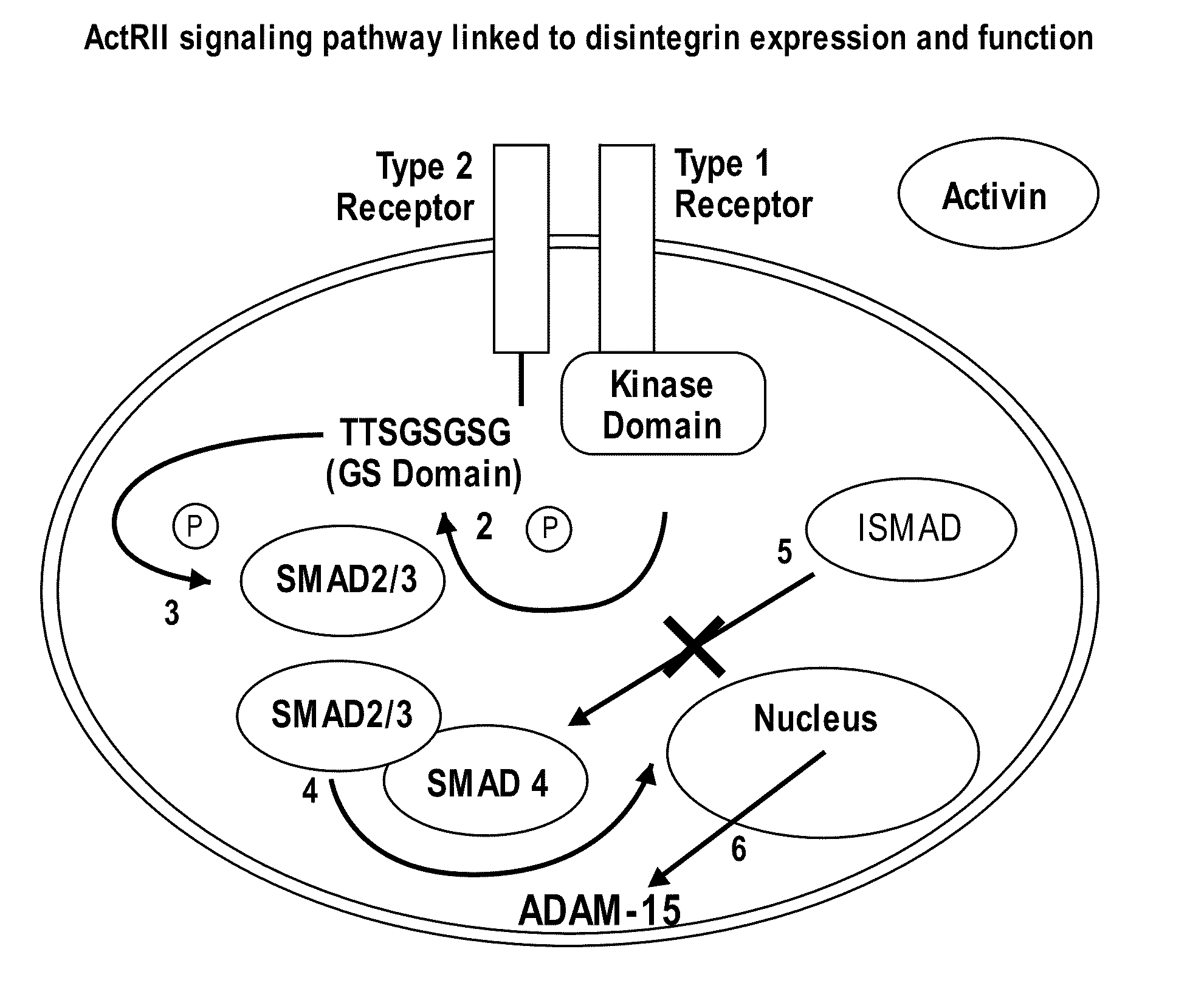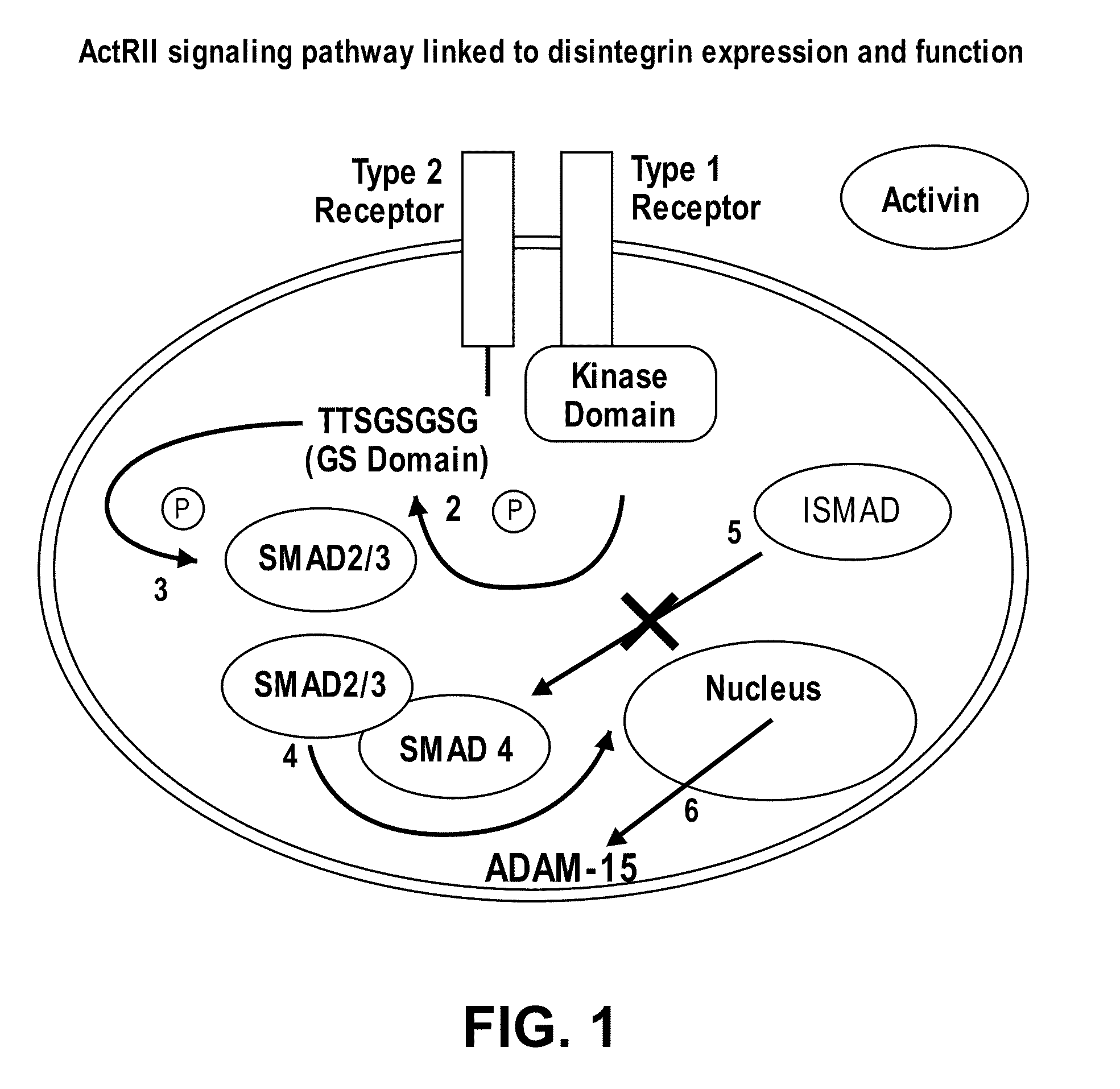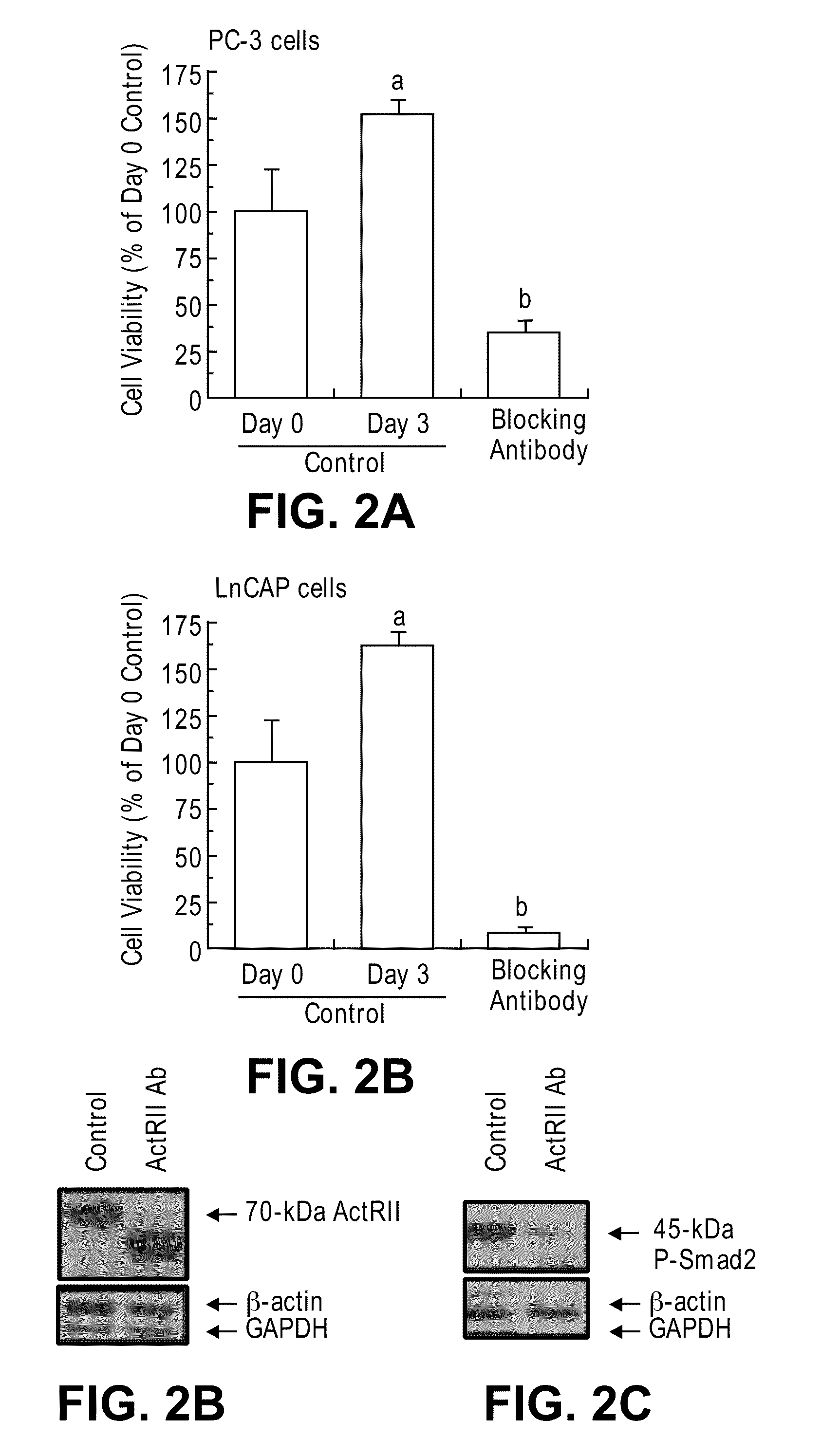Methods for identifying agents that inhibit cell migration, promote cell adhesion and prevent metastasis
a technology of metastasis and cell migration, applied in the field of assays, can solve the problems of few effective treatments for metastatic cancer, poor wound healing, organ dysfunction and ultimately death, etc., and achieve the effects of reducing disintegrin or metalloprotease expression, preventing cell detachment and cell invasion, and increasing actrii signaling
- Summary
- Abstract
- Description
- Claims
- Application Information
AI Technical Summary
Benefits of technology
Problems solved by technology
Method used
Image
Examples
example 1
ActRII Oligonucleotide-induced Detachment of Cancer Cells in a Microwell Format for the High Throughput Screening of Small Molecules to Inhibit Cell Detachment
[0080]Prostate cancer cell lines (e.g. PC-3 cells) are cultured in 96-well opaque plates (luminescence compatible) at 37° C. in 100 μL of F-12 Nutrient Mixture (Ham; Gibco, InVitrogen Corporation, Carlsbad, Calif.) supplemented with 1% penicillin-streptomycin (P / S; Gibco, InVitrogen), 2 mM glutamine (InVitrogen), 0.4 mM sodium bicarbonate (Sigma, St. Louis, Mo.), and 5% fetal bovine serum (FBS, #26400-036; Gibco, InVitrogen). When cells reach 80% confluence (at least 24 h after plating to allow suitable attachment), cells are treated every day for 1-3 days with:[0081]1) medium+0.4 μM ActRIIB sense-P oligonucleotide (SEQ ID NO 4); or[0082]2) medium+0.4 μM ActRIIB antisense-P oligonucleotide (SEQ ID NO 3); or[0083]3) medium+0.4 μM ActRIIB antisense-P oligonucleotide (SEQ ID NO 3)+small molecule (0-10 μM).[0084]4) medium+0.4 μM A...
example 2
Antisense Oligonucleotide Suppression of ActRII Along with ADAM-15 Suppression Prevents Cell Detachment
[0088]To test that cell detachment induced by suppressing ActRII signaling was mediated via the metalloprotease ADAM-15, we treated PC-3 prostatic cancer cells with antisense-P against ActRII and then treated these cells with antisense-P against ADAM-15. A significant decrease in cell attachment was detected after 3 days of treatment with antisense-P against ActRII, and this was reversed by treatment with antisense-P against ADAM-15 (p<0.01, n=5). As shown in FIG. 5, neither sense against ActRII nor together with sense against ADAM-15 altered cell attachment. These results illustrate that cell detachment induced by suppressing ActRII signaling is mediated via the metalloprotease ADAM-15, and further indicate that antisense-P against ADAM-15 as a chemical that can prevent prostate cancer cell detachment.
[0089]Androgen-insensitive PC3 cells derived from a grade IV human prostate aden...
PUM
| Property | Measurement | Unit |
|---|---|---|
| adhesion | aaaaa | aaaaa |
| cell adhesion | aaaaa | aaaaa |
| cellular morphology | aaaaa | aaaaa |
Abstract
Description
Claims
Application Information
 Login to View More
Login to View More - R&D
- Intellectual Property
- Life Sciences
- Materials
- Tech Scout
- Unparalleled Data Quality
- Higher Quality Content
- 60% Fewer Hallucinations
Browse by: Latest US Patents, China's latest patents, Technical Efficacy Thesaurus, Application Domain, Technology Topic, Popular Technical Reports.
© 2025 PatSnap. All rights reserved.Legal|Privacy policy|Modern Slavery Act Transparency Statement|Sitemap|About US| Contact US: help@patsnap.com



